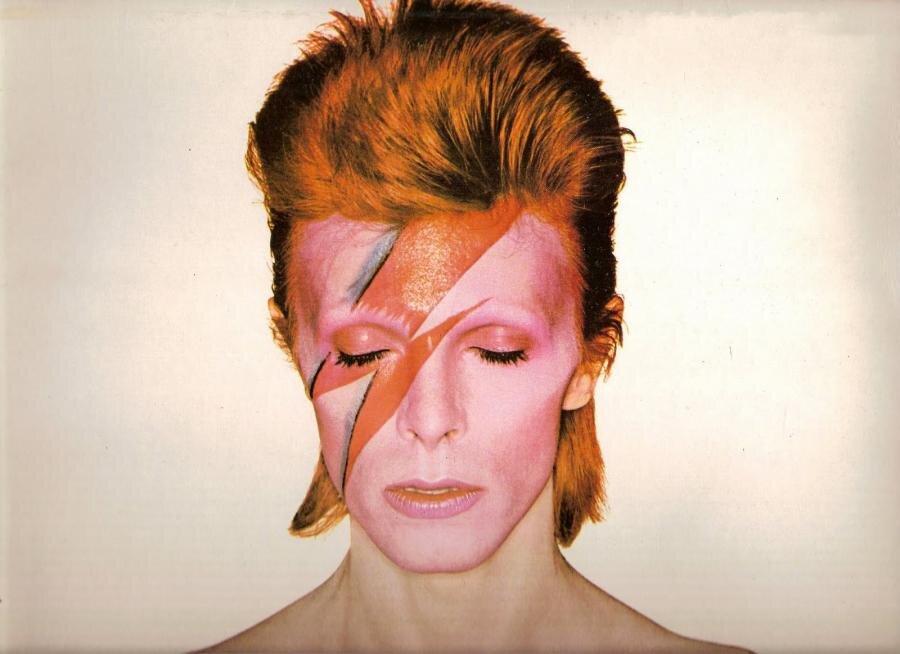David Bowie and the Power of Positive Posing

The new "Five Years" box set documents the years when Bowie learned how not to be himself.
The new "Five Years" box set documents the years when Bowie learned how not to be himself.
Five Years 1969 – 1973 isn’t simply another repackaging of classic David Bowie albums. The new box set on sale now collects the albums that defined him—David Bowie (also released as Space Oddity), The Man Who Sold The World, Hunky Dory, The Rise And Fall Of Ziggy Stardust And The Spiders From Mars, Aladdin Sane and PinUps. It also includes two live shows—Santa Monica in 1972 and Ziggy Stardust: The Motion Picture Soundtrack—another collection of B-sides, other mixes, and so on, and a handsome book with production notes, reviews, photos, and microscopic type.
The box is part of a series of box sets that will span Bowie’s career, and the one that covers the period that established his M.O. as someone whose sound, look and persona could change from album to album. In The Age of Branding, such an approach seems unthinkable.
Last year’s Bowie retrospective “David Bowie Is” show at Chicago’s Museum of Contemporary Art provided some insight into this period. One room documented the efforts of a pre-“Space Oddity” Bowie to become somebody. In one audio clip, he spoke of how he would buy certain albums—usually jazz ones—not because he wanted them but because he wanted to be seen as the sort of person who did. Similarly, he would walk around with a paperback carefully positioned in his jacket pocket so that people could see the title of the book. He didn’t necessarily read the book, but he wanted to be seen as the guy who would.
As superficial as that sounds, that experience clearly prepared young David Jones to become David Bowie. You could say he was being a pretentious git, or you could say he was being a teenager, doing something primarily for effect. At the same time, he was learning—or perhaps honing—his ability to inhabit someone not entirely himself.
[video:https://www.youtube.com/watch?v=D67kmFzSh_o]
The next room of the Chicago show prominently featured “Space Oddity” and "Starman", presenting Major Tom and a rock ’n’ roll alien as Bowie’s first two someones. That representation of his career elided three years together and overlooked two albums to get to "Starman," which appears on 1972's Ziggy Stardust and the Spiders from Mars. The big picture is accurate enough though, as Five Years’ time span coincides with the early years of the Apollo program, which made space travel seem not only possible but eminent. Bowie clearly chose to be the rock ’n’ roll star for the moment—one when every mundane aspect of human life is touched by an awareness of the possibilities including the optimism that they could be achieved. He embodied a future free from the conventional.
It was a potent promise, particularly in England. Like a country cousin, America was slower to warm to Bowie, finding him weird. Today when television has two transgender stars, Bowie in dress with Marlene Dietrich hair falling across his face barely raises a flicker of consternation, but when The Man Who Sold the World was released in 1970, that androgynous cover photo was replaced in America by sexually safer comic art. The art on the gatefold of the original release of Aladdin Sane presented an airbrushed Aladdin Sane sans genitals—not sanitized out of the image but never there in the first place—and Ziggy Stardust took the omnisexuality that is part of the rock ’n’ roll star’s subtext and made it the text.
To my mind, the next box will tell the story of Bowie finding the limits of adopting definable personas as each incarnation attributed to him seems more like a wardrobe than a character, and that leads to Low, “Heroes” and a way of working that steps outside of persona entirely. In the meantime, Five Years documents the power of positive posing.






